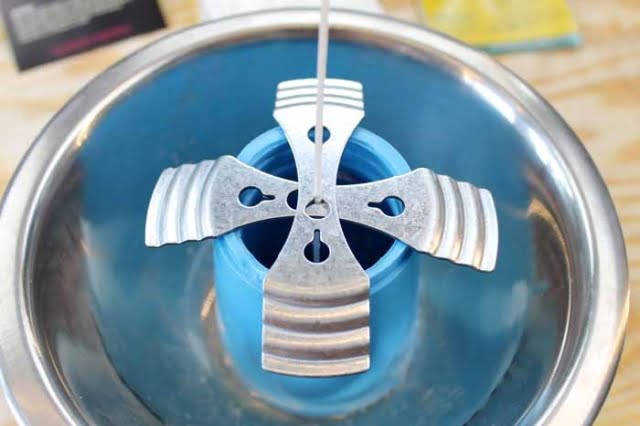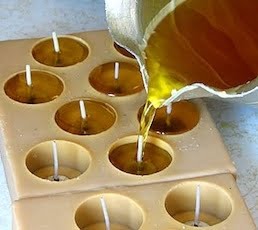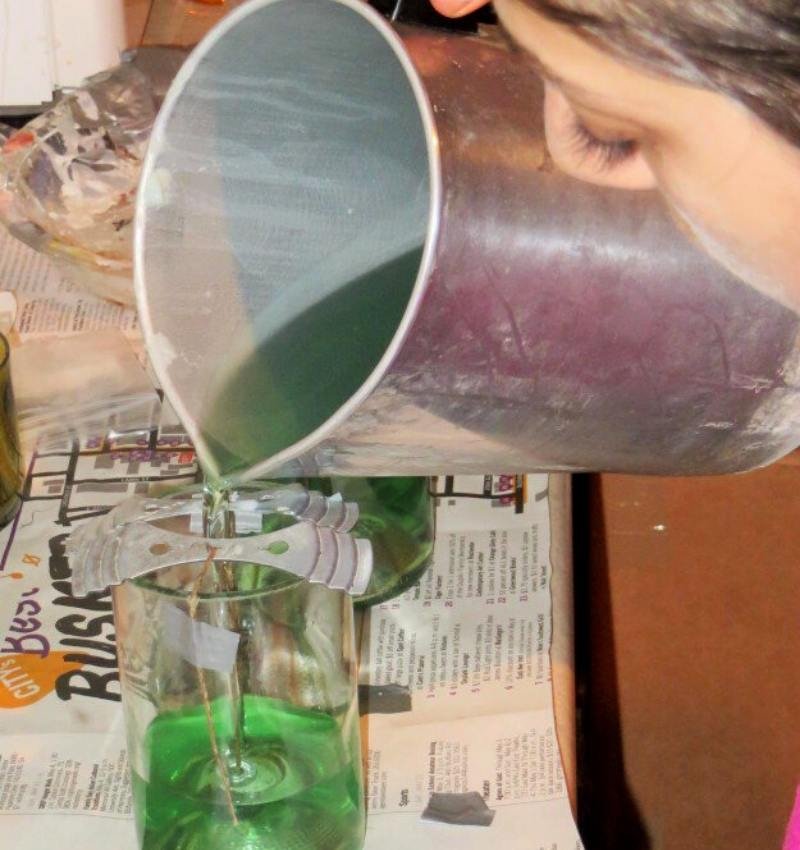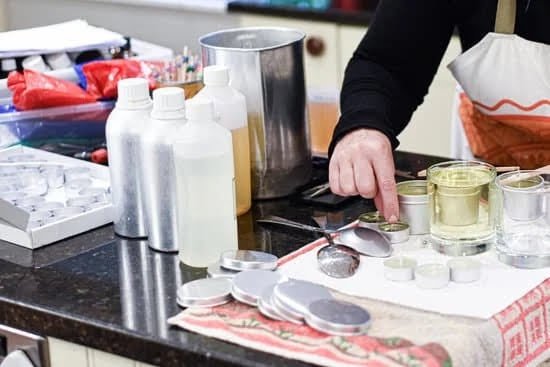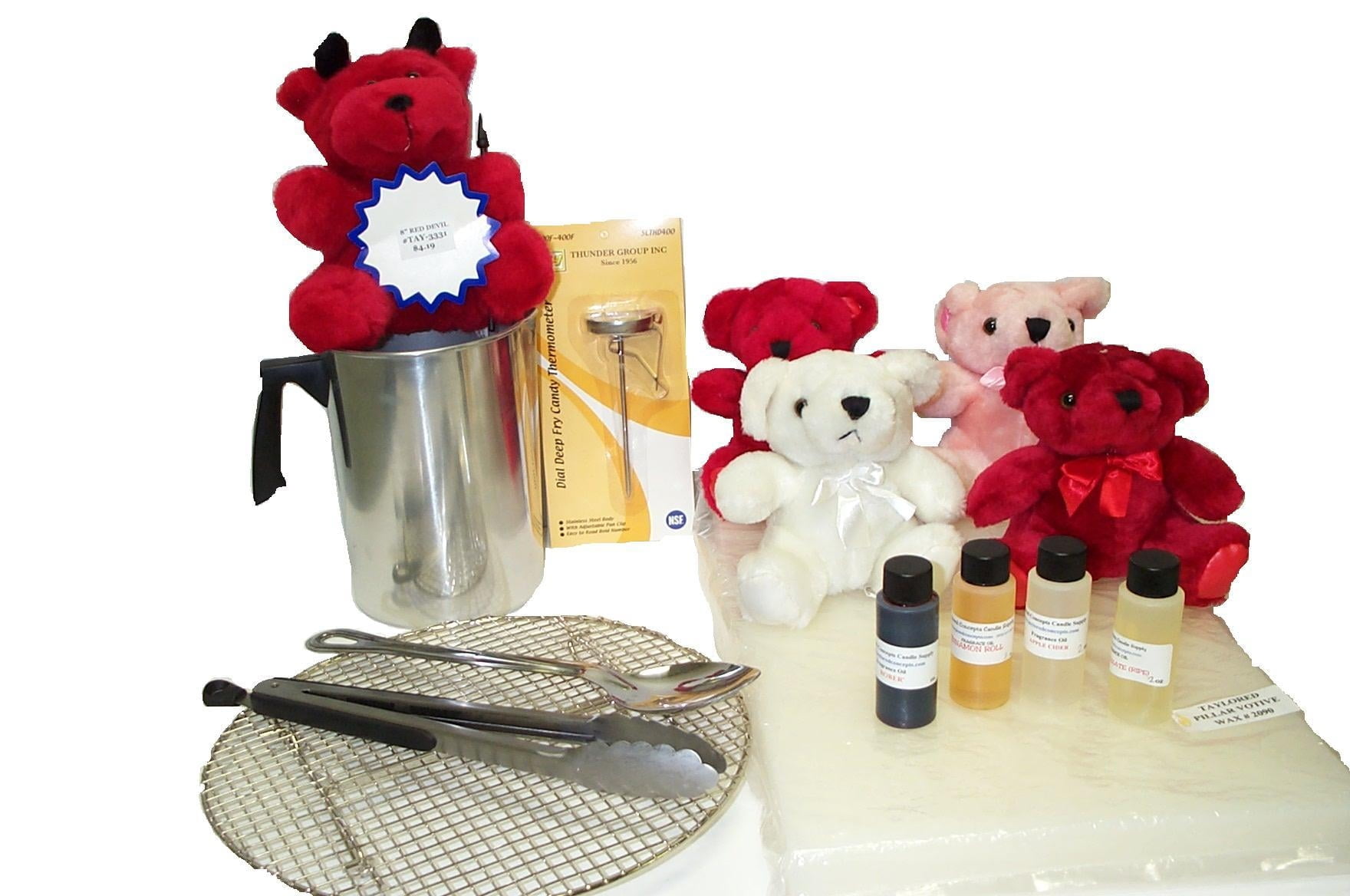DIY candle making has become increasingly popular in recent years as more people become interested in creating a custom made product which can be tailored to meet their own needs. This type of craftsmanship allows individuals to express their creativity and incorporate unique ingredients into the finished product.
With diy candle making, there is a vast array of scents available that can truly transform any room or setting. From classic aromas such as lavender and lilac to more modern scents such as pine trees, lemonade, and cotton candy, the possibilities are seemingly endless when it comes to creating your ideal homemade candle.
A bit of an old-fashioned activity, DIY candle making has been around for centuries. Evidence suggests that candles were created around 200 BC from wax made by bees.
As time passed however, other materials such as animal fat, lard, and even butter were used in the making of candles until eventually synthetic components were invented which provided better results than natural ones did. It wasn’t until the mid-1800s that scented candles began to be produced more commercially with options for different aromas now becoming widely available in stores.
With technological advances over the past few decades allowing easy access to supplies, tools, materials and instructions for DIY crafts like diy candle making today’s crafters have much more freedom and creativity when crafting their own pieces. Many craft stores offer pre-packed kits specifically made for candlemaking that contain everything you need to get started including wicks, waxes, fragrances and wax colorants.
There are also many online tutorials which provide detailed step by step instructions on how to make any style of diy candles you would like. For someone who wants to have some fun while creating unique pieces of art with practical use; diy candle making could be a great way to go.
Additionally if you’re looking to mix things up while expressing yourself through scent there are plenty of exciting scent combinations available with different essential oils such as sandalwood and lavender or jasmine and rose that can really emphasize the relaxing nature of DIY candle making activities. Regardless of what aroma or fragrance one wishes it augurs well that they can find nearly anything they want either at home or retail outlets providing almost limitless potential for fragrant combinations.
Different Scents and What They Evoke
Scents are one of the most powerful means of communicating different emotions and feelings. It has been seen that scent triggers a range of emotions and memories in people, depending on what kind of scent they are exposed to.
Smells trigger a distinct association that connects us with our individual past experiences, making it mostly associated with positive or negative emotions. Numerous studies have concluded that scents have an immense power over an individual’s mood, energy levels, stress level and even decision-making processes due to the emotional effect it has on our brain.
The reason behind the scent storage is linked to memory formation and recall mechanisms in the brain. Throughout life, our experiences help produce smells in our mind which evoke very distinct memories when we later inhale them again. For example, if you come across someone wearing a particular perfume or cologne which carries the same smell as your first love it could easily bring back strong memories from your relationship.
The olfactory system is directly connected to two parts of the limbic system: the hippocampus and amygdala. Both play an important role in emotion and memory forming pathways which explains why they are able to form such strong connections between smell and emotion in individuals.
Common Candle Scents
- Lavender – This calming scent brings a feeling of relaxation and peace as well as drift thinking.
- Woodsy – Woodsy scents like sandalwood or cedar evoke feelings of warmth and nature
- Fruity – Grapefruit, Orange blossom, Apple cinnamon etc bring back freshness in the air.
- Spicy – Spicy scents like nutmeg or cinnamon can energize us with some festive vibes.
Understanding fragrances can be complex as each person has their own response to these scents. Generally speaking though candle scents tend to provide a more pleasant environment for relaxation making them a popular choice for many people today. Understanding how fragrances works on humans may prove an advantageous tool in curing mental health conditions such as anxiety or depression overtime also through both medical treatment approaches coupled with aroma therapy.
DIY Tools and Materials Needed
The materials needed to make DIY candles do not have to be complicated or expensive. The basics of candle making include wax, fragrance oil, wicks, containers or molds and a double boiler. Additionally, if you are looking to make scented candles you can also find all the necessary supplies online.
The most important component in candle making is wax. Depending on your budget, hobby level and desired results there are a number of different types of wax that can be used. Commonly used are natural beeswax, soy wax, paraffin, vehicle gel (a low temperature burning wax) and palm wax. If you prefer not to buy raw material, pre-made candle chunks can easily be found online.
When it comes to scenting your candles there is no limit to the kind of scents you can use for your projects. You can opt for fragrance oils specifically designed for candle making which can usually be found in craft stores and will give the best result when they interact with the heat from the flame as they’ve been especially formulated to release their intended scent as efficiently as possible upon contact with heat.
Alternatively could consider high quality essential oils as well which are typically more expensive but arguably provide a much higher quality scent profile than their synthetic counterparts. What ever type of scent you choose make sure its made specifically for candle making use and that you observe all safety information when working with fragrances oils.
Finally when it comes time to execute your masterpiece don’t forget about choosing the right wick size for the does pot/container size you are using. Certain types of wicks such as CD-3 Cored Wicks are often suitable for beginners projects while larger more complex projects may require something like flat braided cotton core Zinc & Tin alloy cored wicks.
Regardless just ensure that any wick used has been tested by yourself as it’s safe and produces an even burning flame.
Step-by-Step Guide to Making Your Candles
Making candles can be a simple yet enjoyable experience. With a few simple supplies, you can create an array of different scented candles to enjoy. Before getting started, make sure to have the appropriate safety equipment such as oven mitts, goggles and protective breathing gear ready.
To start, it’s important to select the types of wax you’d like to use. Paraffin wax is among one of the most common choices and also melts faster than other alternatives; making it ideal for those who are just beginning with candle making. Be sure to choose wax that has been specifically meant for candle-making as this will ensure optimal safety and effectiveness when used correctly.
When it comes time to add scent, there are plenty of options available. If you prefer a traditional option, essential oils make for great aroma options. Essential oils come in a variety of scents such as lavender or citrus which both have great relaxing and calming effects when used in candles.
Fragrance oils are another popular choice due to their easy availability; however opt for those made from natural ingredients when possible so that toxicity is not an issue. Whichever type you prefer, adding scent is easily done by mixing the oil into your melted wax until reaching your desired level of intensity – taking care not to over-fragrance the mixture.
Once combined, pour your melted wax into all chosen molds – whether plastic or silicone here – filling up approximately 3/4ths of each container before allowing them cool off completely at room temperature. Once cooled down completely, pop out your finished product from its mold before decorating them with your own personal designs if desired; et voila. Your very own custom made scented candles await your enjoying pleasure :).
Aromatherapy Benefits of Different Scents
The benefit of aromatherapy when it comes to making your own diy candles is immense. You can infuse the essential oil of any type into the wax that you are using to create a highly fragranced and beneficial atmosphere in any room.
The power of different scents goes beyond simply having an inviting aroma in a room, as it also has numerous physical and mental benefits for those who use them.
- Lavender: this oil promotes relaxation, soothes the nerves, and relieves tension.
- Peppermint: this invigorating scent helps restore energy and promote mental clarity.
- Eucalyptus: this refreshing scent boosts immunity, clear congestion, and eases muscle pain.
- Citrus oils such as Lemon or Orange: these cheerful scents can revitalize the spirit and have a relaxing effect on the body.
Benefits of Different Candle Making Scents
- Rosemary: This scent has been linked to reduced stress levels and better concentration.
- Frankincense : This is another great calming influence that may help reduce anxiety and insomnia.
- Jasmine :One recent study found that people exposed to jasmine had increased alertness, improved memory, reduced depression levels and even better decision-making abilities than those not exposed to it.
Psychological Benefits of Scented Candles
Tips and Tricks for Achieving the Best Results
Candle Making is an enjoyable and creative undertaking, and adding in some signature scent profiles to your candles is a great way to give them that added personal touch. However, if you’ve never worked with scents before, it can seem like an intimidating process.
The good news is that there are several ways to create unique and interesting scent profiles for your candles that don’t require a lot of work or special knowledge. Here are some tips and tricks you can use to get the best results when making scented candles:
- Start with quality candle wax – Waxes such as soy wax, cocoa butter or beeswax are preferred for candle making because they are all naturally occurring and safe for burning indoors.
- Purchase quality scent oils from a trusted source – Essential oils will be some of the best-suited scents for burning in candles, but make sure you buy them from a reputable source that follows safety guidelines.
- Use the right ratio of fragrance oil – Remember that less fragrance oil is usually better than more; start with about one part essential oil per four parts wax and experiment until you find the right balance.
In addition to these basic considerations when making scented candles, there are a number of recipes you can follow for achieving complex scent profiles. For example, try combining 2-3 essential oils together such as Carrot Seed Essential Oil with Lavender Essential Oil. This specific recipe would create a refreshing floral scent. Or combine Orange Essential Oil with Sandalwood Essential Oil – this combination will provide uplifting fruity notes mixed with sensual woody aromas.
You could also try experimenting with various essential oils to build more complex scents into your homemade candles. Try mixing citrus oils like Bergamot and Lime along with Lily of the Valley aromas like Oakmoss and Hyacinth – the result will be an incredibly balanced zestiness.
Lastly, give yourself permission to play around by mixing different kinds of fragrances including herbal essences (Rosemary), woodsy smells (Cedarwood) or musky tones (Patchouli). With effortless experimentation comes easy tinkering which opens up endless possibilities for creating signature event-specific perfumed candles.
Recipes for Blending Different Candle Scents
Candle making is an enjoyable and therapeutic hobby that allows novice hobbyists to not only relax but also to create custom pieces that suit their individual needs. At the same time, it can be challenging to select the perfect scent for a candle. Fortunately, blending different scents together is a great way to get creative and come up with unique fragrances for candles.
When measuring granules of scents for candles, it’s best to use percentages in order to ensure that the ratio of fragrances is correct and consistent when crafting multiple candles with the same scent combination. A basic blend could start off at around 10%, before adding more or less depending on personal preferences.
For starters, different categories of fragrances include floral aromas such as lavender and rose; herbaceous notes like mint, sage or eucalyptus; citrusy ones like lemon and orange; spicy ones such as cinnamon and anise; woodsy aromas like cedarwood or sandalwood; warm gourmand notes such as vanilla or cocoa bean; plus refreshingly clean scents like tea tree oil or tea fragrance oil.
Overall, by mixing a few of these elements together correctly hobbyists can create anything from calming and peaceful night time scents using lavender combined with geranium essential oils – therefore setting a relaxing atmosphere – to energizing morning fragrances with zesty lemon mixed with peppermint essential oils so one can tackle their day ahead feeling refreshed.
Alternatively, for fun occasions such as summer barbecues one could combine something sweet (brown sugar) with something smoky (cedarwood), while those looking for something alluring they could experiment with jasmine sambac matched with musk oil and ylang-ylang – just try not to mix too many aromas otherwise instead of achieving balance you might end up creating a confusing amalgamated note.
Safety Tips for Candle Making
There are some essential safety tips to consider when making candles. The most important tip is to always be cautious and attentive throughout the entire candle making process. It is highly recommended to wait until all children and pets are out of the room before beginning any steps.
Additionally, remember that wax can easily start a fire if not handled correctly, so having a fire extinguisher nearby and keeping flammable materials far away from the area you’re working in will help to prevent any accidents. It is also important to wear protective clothing such as goggles and gloves while also avoiding skin contact with melted wax or heated objects.
When it comes to scents for your candles, never use essential oils as this can cause carbon dioxide which is toxic upon combustion. Instead, opt for fragrance oils specifically designed for candle or soap making as these are safe to use in both container and pillar waxes. Furthermore, make sure you store your scents correctly at a moderate temperature away from direct sunlight since some fragrances may become weaker or stronger depending on the environmental conditions they’re exposed too.
On an environmental note, candles made from 100% soybean or vegetable wax will have significantly less impact on the Earth than those made with paraffin wax which emits toxic compounds into the atmosphere when burned. As well as being environmentally conscious you should be mindful of investing in double-wicked tins and crocks instead of single wick ones since double wicks create more light output than single wicks but also produce less soot leading to a cleaner burning experience overall.

Welcome to my candle making blog! In this blog, I will be sharing my tips and tricks for making candles. I will also be sharing some of my favorite recipes.

